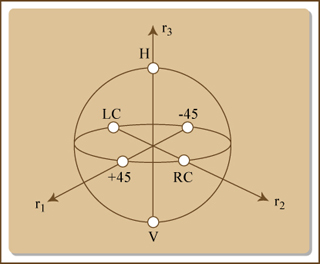
Poincaré sphere. (Image by MIT OpenCourseWare. Courtesy of Prof. Jeffrey H. Shapiro.)
Instructor(s)
Prof. Jeffrey Shapiro
MIT Course Number
6.453
As Taught In
Fall 2008
Level
Graduate
Course Description
Course Features
Course Description
This course is offered to graduate students and covers topics in five major areas of quantum optical communication: quantum optics, single-mode and two-mode quantum systems, multi-mode quantum systems, nonlinear optics, and quantum systems theory. Specific topics include the following: Dirac notation quantum mechanics; harmonic oscillator quantization; number states, coherent states, and squeezed states; P-representation and classical fields; direct, homodyne, and heterodyne detection; linear propagation loss; phase insensitive and phase sensitive amplifiers; entanglement and teleportation; field quantization; quantum photodetection; phase-matched interactions; optical parametric amplifiers; generation of squeezed states, photon-twin beams, non-classical fourth-order interference, and polarization entanglement; optimum binary detection; quantum precision measurements; and quantum cryptography.


